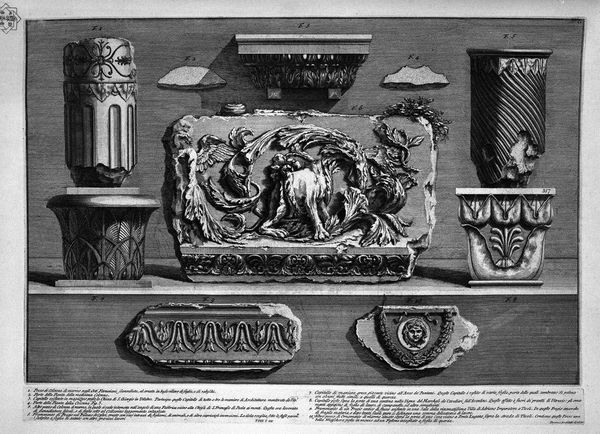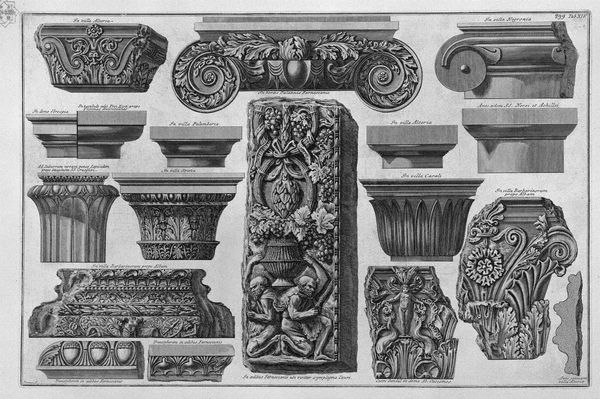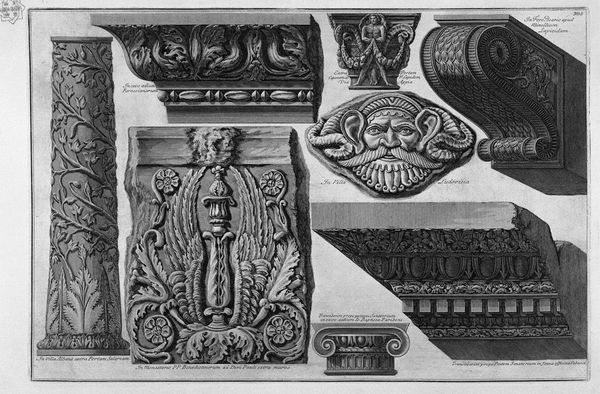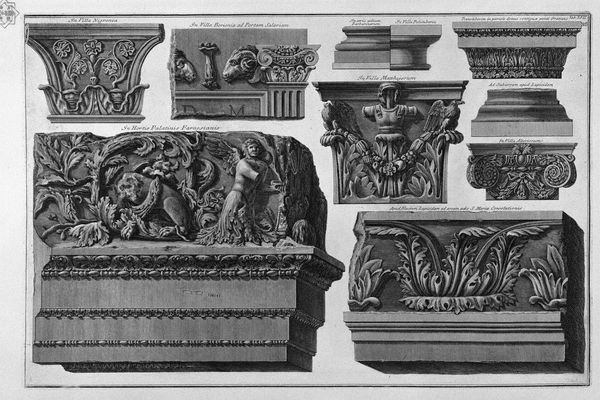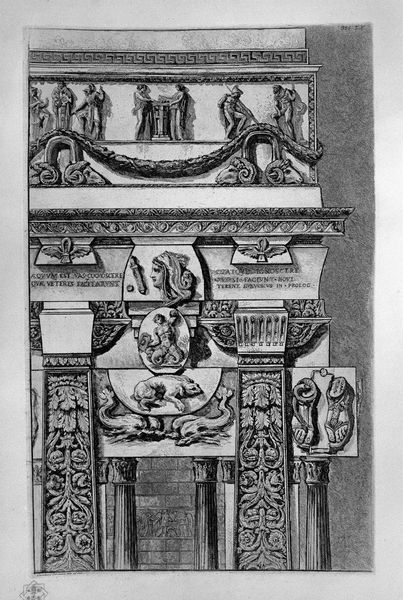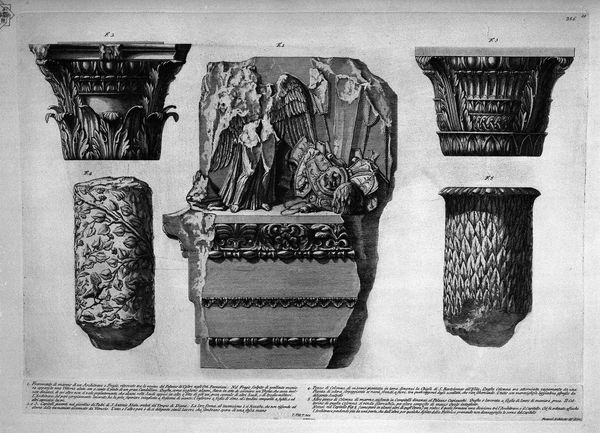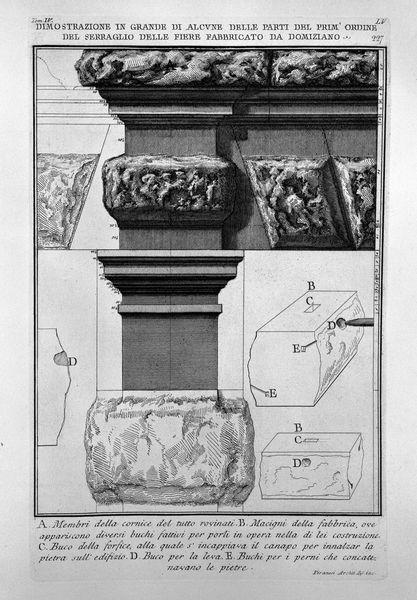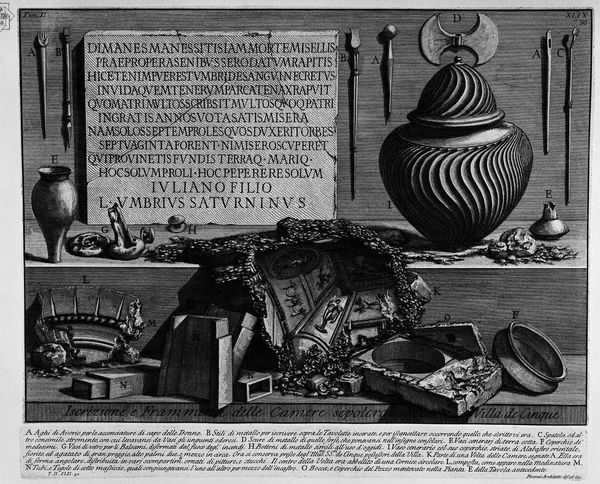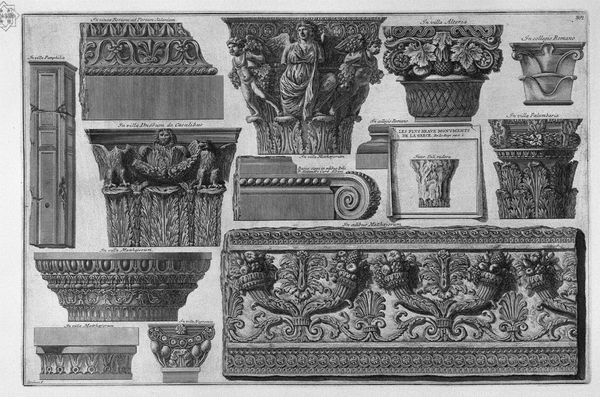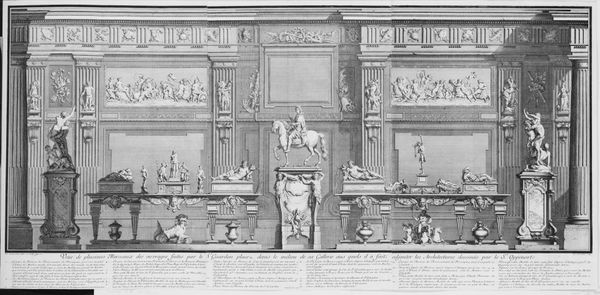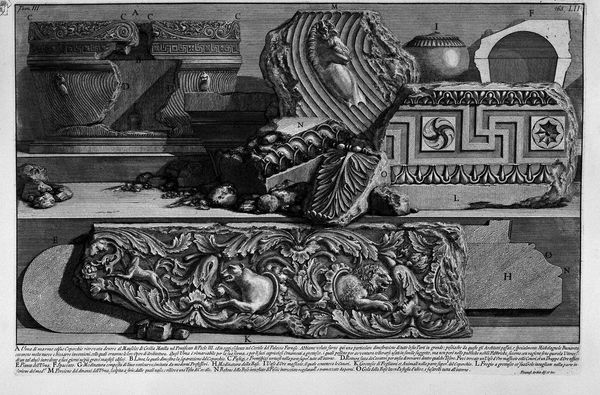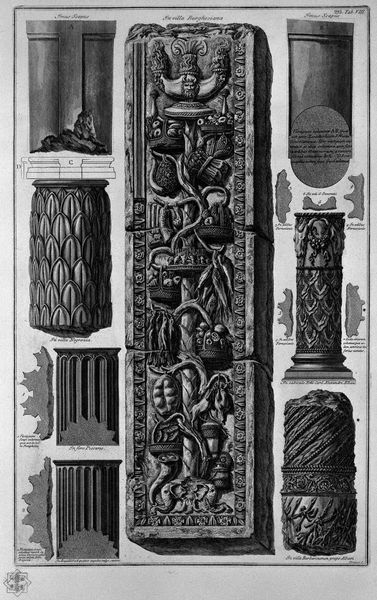
The Roman antiquities, t. 3, Plate XXVII. Urns, vases, sarcophagi and various objects found in burial chambers above (figures carved from Barbault).
0:00
0:00
drawing, print, engraving
#
drawing
# print
#
perspective
#
ancient-mediterranean
#
history-painting
#
academic-art
#
engraving
Copyright: Public domain
This etching by Giovanni Battista Piranesi, presents a detailed catalog of Roman antiquities, focusing on funereal objects discovered in burial chambers. Dominant among these are the urns and sarcophagi, each adorned with symbols that speak volumes of ancient Roman beliefs about death and the afterlife. Notice the recurrent image of the lion, a solar symbol of courage, royalty, and resurrection, often associated with funerary monuments to guard the tomb and represent the deceased's valor. Lions appear in Egyptian, Greek, and later Christian art, reflecting a shared human fascination with strength and protection, transcending cultural boundaries. The gesture of the reclining figure, commonly found on sarcophagi, is rooted in ancient rituals. It evokes deep psychological responses tied to mourning and remembrance. This posture of repose appears in various cultures and across eras. The continuity and adaptability of these symbols demonstrate how collective memory and subconscious processes influence artistic expression. These forms resurface, evolve, and take on new meanings in different historical contexts, bearing witness to our shared cultural memory.
Comments
No comments
Be the first to comment and join the conversation on the ultimate creative platform.
